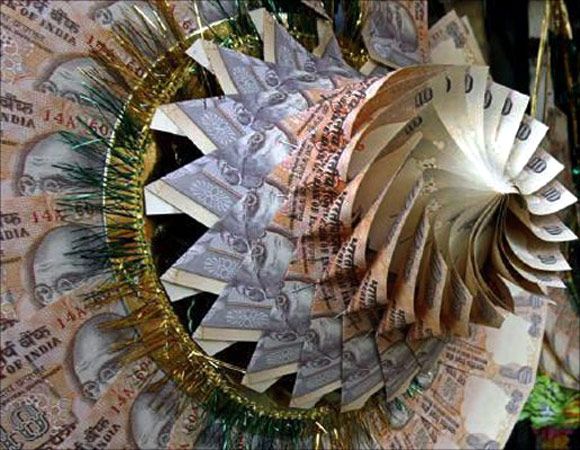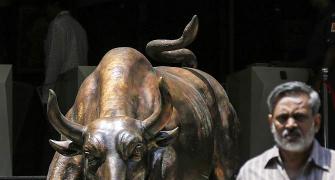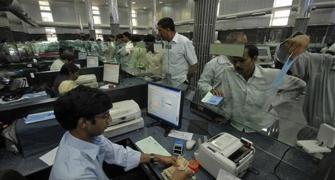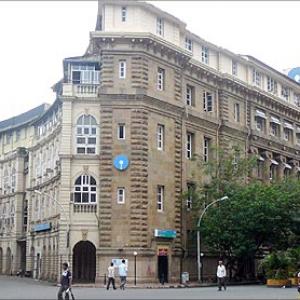The rupee is expected to remain volatile in the new financial year.

The rupee was the worst performing currency among major Asian economies over 2015-16, while bonds did a smart recovery in the last two months of the year.
The rupee closed at 66.25 a dollar, down 0.14 per cent in the year. All other major Asian currencies were gainers.
The yen rose 7.09 per cent and the Indonesia rupiah by 4.15 per cent. The rupee was 62.50 a dollar at end-March 2015.
The currency is expected to remain volatile in the new financial year and this could be bad news for the corporate sector, as nearly half of the top 500 listed companies have a negative sensitivity to rupee depreciation, says an India Ratings report.
“External shocks translating into bouts of risk aversion which usually causes rupee depreciation and, particularly, increased volatility might impact the fragile recovery in FY17,” it said.
"Corporates dependent on imports and foreign currency borrowings are likely to be affected by the continued volatility in the currency market.”
The 10-year bond yield closed the financial year at 7.465 per cent, having closed at 7.737 per cent a year before. The yields had touched almost eight per cent in May last year, on incessant supply of bonds from both central and state governments on a global risk aversion background.
The spread between the repo rate and 10-year bond yields remained frequently above 100 basis points. This is unusual and indicates high stress.
 However, bonds rallied after the central government said it would keep the fiscal deficit at 3.5 per cent of gross domestic product for 2016-17. Subsequently, the Reserve Bank (RBI) clarified that bonds issued under the power discom revival package, UDAY, would be kept outside the market and be placed privately.
However, bonds rallied after the central government said it would keep the fiscal deficit at 3.5 per cent of gross domestic product for 2016-17. Subsequently, the Reserve Bank (RBI) clarified that bonds issued under the power discom revival package, UDAY, would be kept outside the market and be placed privately.
However, the short-term rate remained elevated in the year as liquidity dried in the system. The liquidity deficit crossed Rs 2 lakh crore in March as the government did not prefer to spend its cash with the RBI.
The liquidity crisis pushed up short-term bond yields, even as overnight call money rates revolved around the policy rate, as RBI infused sufficient short-term liquidity and purchased a little more than Rs 60,000 crore through open market bond purchases.
The central bank also frequently tapped into secondary market bonds, through the anonymous bond trading platform.
Still, rates in three-month commercial paper closed at 8.68 per cent at the end of the financial year, from about 8.2 per cent at the start.
According to bond dealers, the new financial year will be good for bonds.
The borrowing number remained relatively less at Rs 6 lakh crore at a time when inflation is expected to fall sharply, giving scope for more rate cuts to RBI. The central bank will hold its first bi-monthly monetary policy review of 2016-17 on Tuesday, where it is expected to cut rates by at least 25 basis points.










